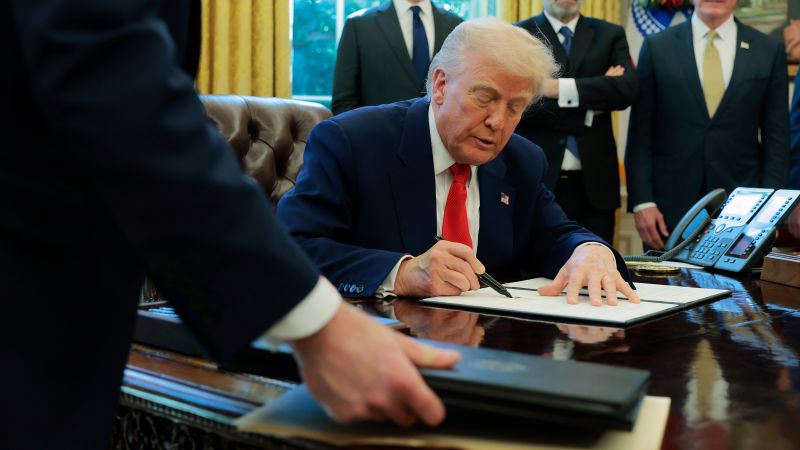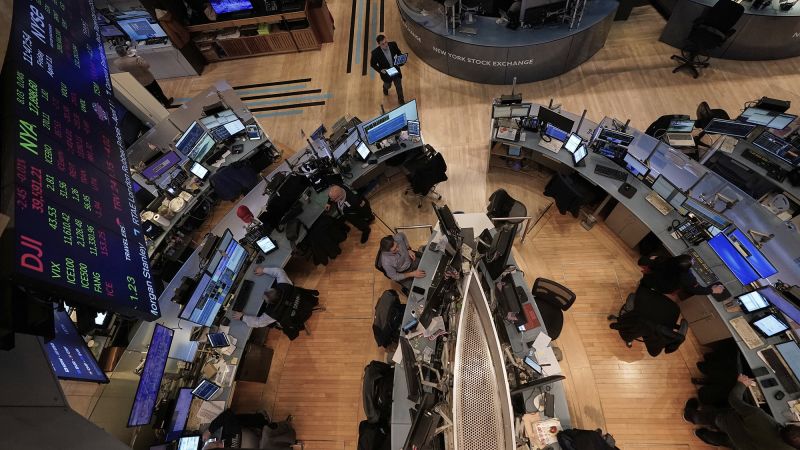In a dramatic twist in international trade dynamics, former President Donald Trump and his team recently revealed their strategy: initiate high tariffs to provoke fear and push nations into negotiations. While the aim was to secure favorable trade agreements globally, the reality presents a complicated challenge. The administration’s 90-day hiatus on its so-called "reciprocal" tariffs leaves little time to negotiate intricate deals, especially with a multitude of countries eager to engage.
Financial Markets React
Market reactions have been anything but stable. Following a day of significant sell-offs, financial markets displayed slight recovery on Friday. The Dow futures rose by 115 points, reflecting a cautious optimism, while S&P 500 and Nasdaq futures also saw modest increases. However, volatility remains high, with any announcement from the Trump administration capable of triggering sharp market shifts.
- On Thursday, stocks plummeted after the administration revealed a tariff figure of 145% on China, contrary to earlier estimates of 125%.
- The Dow experienced a staggering drop, at one point decreasing by over 2,000 points.
- In the past week alone, the Dow Jones Industrial Average has had four instances of closing with a shift of at least 1,000 points.
Bond Market Uncertainty
The bond market is behaving unexpectedly. Traditionally, one would anticipate bond prices to rise amid market turmoil as investors seek safety in U.S. Treasuries. However, bond prices are declining, reflecting a growing skepticism regarding U.S. trade policies.
- Treasury yields surged to 4.4%, up from under 4% just days prior, indicating a significant shift that could negatively impact the economy, particularly affecting consumer loans linked to these rates.
- JPMorgan’s CEO, Jamie Dimon, voiced concerns in his recent letter, highlighting the risks associated with an "America First" approach, which may isolate the U.S. from its key trade partners.
Oil Market Trends
The oil market appears to be anticipating economic downturns, with prices dropping sharply.
- The cost of U.S. oil has fallen to around $60 per barrel, nearing a four-year low, while Brent crude is trading at approximately $63 per barrel.
- Historical patterns suggest that falling oil prices often signal a recession, as seen during the Great Recession of 2008.
Dollar’s Decline
In an unexpected move, the dollar has dipped to its lowest value in three years.
- Normally, tariffs bolster a currency’s value, as they encourage domestic purchasing. Yet, traders are offloading the dollar, anticipating that the consequences of Trump’s trade strategies will lead to a weaker economy.
- The dollar’s value against the euro is at its lowest since 2022, with the dollar index experiencing a 1.1% drop on Friday.
Prospects for Trade Deals
Despite the skepticism from financial markets, the Trump administration remains optimistic about securing trade agreements.
- Treasury Secretary Scott Bessent reported that over 70 countries have expressed interest in negotiations to alleviate the impact of U.S. tariffs. The administration is focusing on allies like South Korea and Japan.
- However, negotiating trade deals is typically a lengthy process, and with the ongoing trade war, especially with China imposing retaliatory tariffs, the landscape remains fraught with challenges.
Economists express reservations about the efficacy of rapid negotiations, asserting that significant damage has already been inflicted on the economy. With existing tariffs—such as 10% universal tariffs, 25% on autos, and others—experts from JPMorgan and Goldman Sachs suggest that the likelihood of recession looms close to 50%.
As markets navigate this turbulent period, the question remains whether the Trump administration can turn its trade strategy into a successful economic outcome.











